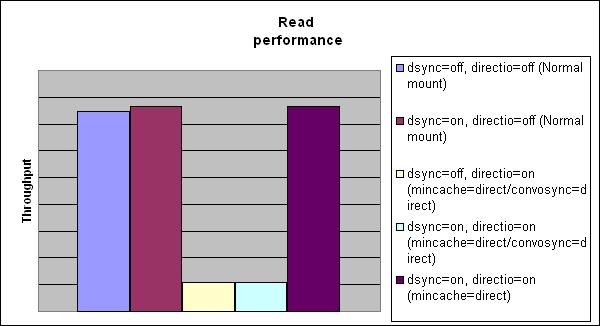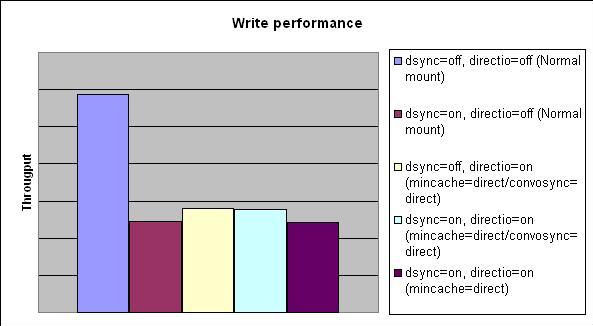Difference between revisions of "Veritas vxfs filesystem performance"
From SybaseWiki
m |
m |
||
| (One intermediate revision by the same user not shown) | |||
| Line 8: | Line 8: | ||
Additional mount options used in the test were: mincache=direct and convosync=direct | Additional mount options used in the test were: mincache=direct and convosync=direct | ||
| − | See below graphs for a quick overview of the resulting throughput. | + | See below graphs for a quick overview of the resulting throughput. For each bar the specific Sybase device settings are given (dsync / directio), as well as the Vertitas mount options. A higher bar means better throughput. |
| − | |||
| − | + | [[Image:Read_vxfs.jpg]] | |
| + | |||
| + | |||
| + | [[Image:Write_vxfs.jpg]] | ||
| + | |||
[[Category:ASE]] | [[Category:ASE]] | ||
Latest revision as of 12:31, 29 April 2007
In an attempt to use the direct I/O feature of Sybase ASE 15 on a Veritas filesystem I ran into a couple of issues. It seems that direct i/o is not possible on this type of filesystem. You will see this in the errorlog:
Unable to open file in DIRECTIO_ON mode, error: (25) Inappropriate ioctl for device
To get the best performance out of this type of filesystem I ran some tests with different mount options.
A normal mount has these options set: read/write/nosuid/delaylog/largefiles/ioerror=mwdisable Additional mount options used in the test were: mincache=direct and convosync=direct
See below graphs for a quick overview of the resulting throughput. For each bar the specific Sybase device settings are given (dsync / directio), as well as the Vertitas mount options. A higher bar means better throughput.

